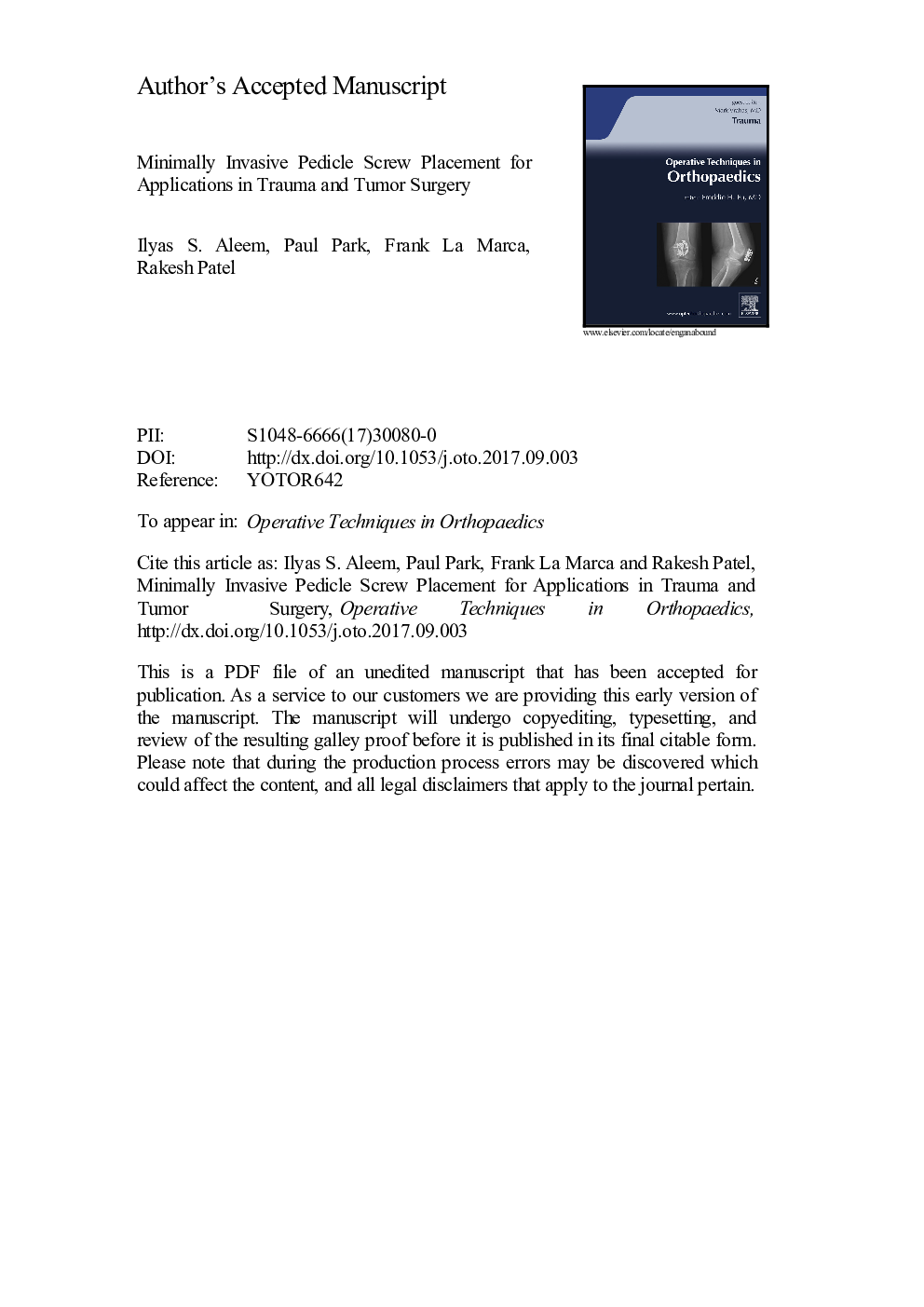| Article ID | Journal | Published Year | Pages | File Type |
|---|---|---|---|---|
| 8801806 | Operative Techniques in Orthopaedics | 2017 | 20 Pages |
Abstract
The goals of pedicle screw fixation after spinal trauma or metastatic disease are to restore stability, protect neural elements, and to obtain and maintain physiologic spinal alignment. Conventional open surgical techniques are often associated with extensive muscular dissection, significant blood loss, soft tissue morbidity including paraspinal muscle denervation and atrophy, and postoperative pain. To minimize these risks, and at the same time achieving the same goals, minimally invasive surgical (MIS) techniques have emerged as a successful alternative for patients with trauma or tumor. The decreased morbidity associated with percutaneous approaches may be particularly beneficial in these vulnerable populations, especially where patients may not tolerate a comparable open procedure. The principles for performing MIS pedicle screw fixation include accurate and reliable intraoperative imaging, careful consideration of anatomical landmarks for screw placement, and astute combination of tactile, visual, and auditory feedback at every step of the case. We aim to describe the surgical technique of MIS pedicle screw placement for applications in trauma and tumor. Knowledge of indications and contraindications, careful preoperative planning, and meticulous surgical technique are paramount for ensuring a successful outcome.
Related Topics
Health Sciences
Medicine and Dentistry
Orthopedics, Sports Medicine and Rehabilitation
Authors
Ilyas S. MD, Paul MD, Frank MD, Rakesh MD,
